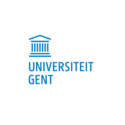In short
To introduce new solutions to the challenges associated with the COVID-19 pandemic, textile companies are incorporating nanofiber, nanocomposite and nanoparticle technology into face masks. For example, titanium dioxide nanoparticles are added in the production of chemical fibres as a white colorant, as a matting agent and as UV-filter. In the TiO2Mask project we aim to assess if they are safe to use in facemasks.
Project description
The TiO2Mask project focuses on the identification, the physicochemical characterization and the estimation of release of titanium dioxide particles from commonly used face masks. Information regarding the amounts of titanium dioxide particles that are released and inhaled from face masks in normal and intensive use conditions is lacking. Titanium dioxide is classified as a carcinogen when inhaled, Carc.cat.2, H351 according to the European classification, labelling and packaging (CLP) regulation and therefore requires further research. We carry out in-situ physicochemical characterisation and an assessment of possible release of particles, which are essential to identify risks associated with wearing face masks containing titanium dioxide particles..
To determine which type(s) of face masks contain titanium dioxide, we perform an initial screening by Inductively coupled plasma — optical emission spectroscopy (ICP-OES), measuring the total amount of titanium dioxide in a selection of face masks. The measured total amount of titanium dioxide is used as a proxy for the presence of titanium dioxide particles.
The titanium dioxide particles are characterized in-situ by electron microscopy (EM). The aim is to detect, localize and measure the size, morphology, agglomeration state and elemental composition of the titanium dioxide particles in sections of the face masks. We assess the number of particles per surface area and the fraction of particles located on the edge of the fibres, most likely to be released.
Specific inhalation exposure data is essential for risk assessment. Inhalation exposure due to release of titanium dioxide particles is estimated for conditions that mimic real life conditions. This includes inhalation exposure during normal use and under specific external conditions (dry air, humid air).
We also investigate if alternative, more simple methods for evaluating the release of titanium dioxide particles can be developed. Such methods should allow assessing the fraction of particles that can be released under both normal use and extreme conditions, as well as differences in release of titanium dioxide particles between the different types of face masks.
The results of this project will provide essential information for the risk analysis of wearing face masks containing titanium dioxide (nano)particles.
Results
Final results and conclusions
In this project we have demonstrated that face masks can contain (nano)particles of titanium dioxide (and silver biocides) and we have also measured the amount of particles present.
Based on these data, we developed a methodology to define a safe ceiling (acceptable exposure limit) that would allow the production of intrinsically safe (safe-by-design) face masks.
In addition to this theoretical estimate, we tried, in collaboration with Ghent University and VITO, to measure the actual exposure to these (nano)particles while wearing a face mask. However, no available method gave a conclusive answer to this question. The current results therefore do not allow to draw any final conclusions on the actual health risks to the wearer, nor does the current scientific knowledge permit to draw general conclusions on possible health risks to the population from wearing face masks containing TiO2 (or silver biocide) (nano)particles.
Based on these findings, we advised the competent authorities to anchor the safe-by-design concept more strongly in legislation. Further research and development is also needed with regard to the safety of products containing (nano)particles. More specifically in these three areas:
- Verify what risks the use of face masks (and other consumer goods) containing nanoparticles entails in practice, and study their possible impact on health.
- Regulate and control the quality of such consumer goods.
- Investigate the health and environmental risks associated with the life cycle of products containing (nano)particles.
Download the final report:
Intermediate results
An intermediate report on the first results of the project has been published. Read the news item, the executive summary or the full report.
Sciensano's project investigator(s):
Service(s) working on this project
Partners




